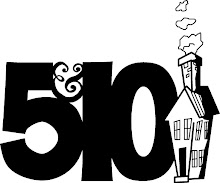No I didn't work there.
No I don't know Magnus.
No I have never eaten there or even been to Sweden.
But, I have seen both versions of The Girl with
the Dragon Tattoo and shop at the purgatory that is IKEA so I feel
like an expert on Swedish culture.
I
got Fäviken in the mail the other day and after having read a fair bit
on Mr. Nilsson, was very excited to pour through it. From the articles I had
perused I was particularly fond of the fact that he was a chef, then a
sommelier, and went back into the kitchen. That's a rare wander in this
industry but a route that would give good insight into the special
relationship between wine and food. I have never understood why more chefs are
not more knowledgeable about wine. It accounts for between 20 and 50 percent of
many restaurants sales and as an independent restaurant owner and chef I think
it's critical that we know about what we sell.
Faviken
is a beautiful book. It is stunningly well written with a great forward by
Bill Buford. I am unsure on whether it was written in Swedish and translated,
or if Magnus is just completely bilingual, and when I say completely I mean
better with the English language than I am. It is a story more than a resource
as the food is of such hyper-regionality that to pull it off you will have to
ferment mushrooms for 9 months, slaughter an old dairy cow, pluck your own
scallops from the ocean, make your own cheese and distill your own vinegar. This
book is not Step 1 to re-introduce you to the wonderful world of your home
kitchen, unless you live in remote Montana and like fermenting peas and killing
your neighbors wandering bovine. It is rather a story of talent coming
home to roost and an unparalleled devotion to a landscape.
In
reading through the day-in-the-life of the restaurant, you realize that Magnus
is a thinker, a seemingly patient plotter of ideas, very influenced by his
stark surroundings. It's all very Zen tundra.
That
Zen patience is lost on page 141 when Magnus catches a chef peeling a carrot in
the way that every other fine dining kitchen would. This is a no-no at Fäviken.
A dull, old peeler must be used and the carrot must be put on a small throne
and bowed to, with minstrels and whatnot. Sadly the beauty of the book has some
points of ridiculousness and this is one of them.
But
I get it. I understand and I respect the love and genuine revelry in purveyed
items. In my own cookbook there is a page called, "An Ode to Carrots"
and I have been known to show pretty stern displeasure with people not
respecting the ingredients. The issue, as Magnus acknowledges, is how is
someone supposed to fulfill your expectations if you give the vaguest
parameters? Unless you are entirely specific in the process, you should never
assume that people will live up to your very high ambitions. I once was
screamed at for not paying enough respect to the artichokes. I guess I should
have asked more clearly but sometimes insecure chefs put people in situations
where success is not an option: no matter what, they will be yelling at you. In
this case the chef who was yelling at me was the real loser: they were cheap
canned artichokes and he was fired about six months later.
There
is a lot of seduction in the book. It's a story about a chef being seduced
by mushrooms, scallops, fermentation, rare Swedish mammals and provincial lichen.
I am busily trying to source a single Capercaillie right now but will probably have to
settle on a duck, hopefully a local hunted one. Maybe that's the takeaway from
this beautiful book: be enamored and seduced by your place and to have a yellow
and red card system for unruly guests.








